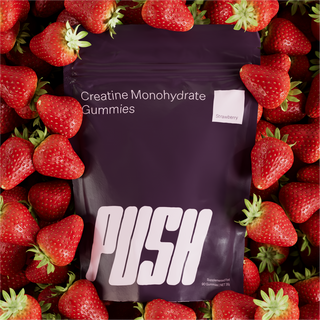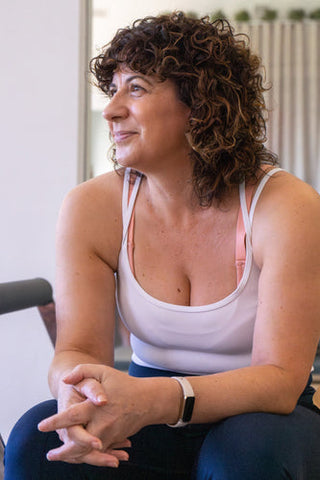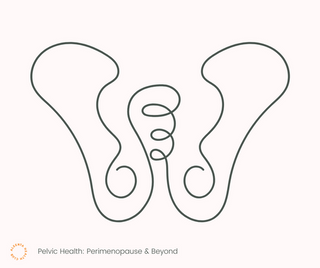Caution: May lead to enhanced performance and euphoria.

It's no secret that our teachers love to challenge your endurance and strength every class, but when the hard work is done we close with a short but sweet hard-earned rest.
And you might be asking, “why is this your M.O.?”
Aleenta lead yoga teacher and restorative yoga therapist, Annie Johns takes us on a tour of how a few magical minutes of rest at the end of your workout are so vital to body and mind.
Need to slow down? Our Yin Yoga classes are the reset you’re looking for.
Yoga. And the rest.

The ancient yogis revered the wisdom of rest so well that they named the ultimate resting posture as the human expression of the deity Shiva (Savasana) – a surrender into the everlasting cycle of destruction and creation that characterises life on our planet.
The word Savasana is tied to the mythology, rituals and cultural practices entwined in and around the yoga of old; it’s a term that belongs only in yoga.
So, when we take a few beats to chill in Barre, Bodyformer & Mat Pilates, we happily and simply call it “rest”.
“This part of the class is arguably as important as the workout itself,” says Annie. “And we do it because it helps chisel a deeper groove into your relationship with self care.”
Here’s why the post-workout rest is vital.
1. Rest resets your myofascial tissues for recovery.
“You might not be stretching or strengthening any part of your body,” says Annie, “but rest assured, down-regulating your nervous systems after working hard promotes muscle recovery to make you stronger, and enhances tissue tone to increase flexibility.”

2. It’s hearty.
The transition from a peak stress point (like a pumping workout) to a resting rhythm influences your cardiovascular health!
The muscular aerobic pressure of exercise is a good kind of stress on the heart, which pumps hard to keep up with the level of oxygen and minerals your muscles need as you work on building strength.

“Heart rate variability is a vital part of heart health, and the speed at which your heart can shift from a fast beat to its resting rate is well-supported by that small window of rest,” Annie says, leaning into the relationship between your heart rate and your nervous systems...
3. Parasympathetic nervous system, activate!
Rest helps your nervous system dominance switch from activated (sympathetic) to down-regulated (parasympathetic) before you leave the studio.
Increasing the heart rate to activate your sympathetic nervous system can feel powerful, and during a workout this is awesome! Stress hormones like cortisol and adrenaline (which push blood away from your vital organs and out to your muscles so you can fight that crocodile in the wild) 100% have their purpose.
But when our nervous systems remain in a prolonged sympathetic state we begin to feel anxious, compressed, and disconnected. Chronic tension and stress perpetuate each other and sleep is harder to come by and fatigue sets in, leaving you feeling all-round depleted.
Annie says aerobic exercise – eg. strong yoga, barre and Pilates – stimulates the sympathetic nervous system but simultaneously stimulates your brain to release lovely endorphins and dopamine, which make you feel pretty swell as they counterbalance the stress hormones.

“This means rest immediately post-workout helps your body capitalise on those feel-good hormones that are being released, so you can access your parasympathetic state more readily,” says Annie.
“The benefits of this extend beyond the immediate – keeping stress levels down gives you more control over how your nervous systems respond to stimuli so you can focus, and to respond to challenges calmly, even after you’ve left the studio.”
4. Riding the wave of contentment
You become aware of that post-workout bliss rush of endorphins, meaning you leave feeling good rather than tense.
“You’ve stretched, strengthened and reached, and now you can enjoy the delicious effects of your efforts – something you can experience fully when you pause,” says Annie.

You should sit in meditation for 20 minutes a day. Unless you’re too busy. Then you should sit for an hour – Old Zen Saying
When resting is tricky.
Are you chronically over-productive? We get it.
Resting can feel uncomfortable or confronting when we’re used to constant movement and focusing our attention outwards – but this is when you most need it!
“Finding something hard – like resting when you’re stressed or overstimulated – is not the same as failing,” Annie says.
“We practise these things because they’re important, not because we’ve already mastered them, or there would be no point!”
The fidgets.
Just like Wild Thing, Teaser and Swan Dive (maybe, lol), resting is a practice that gets easier over time when you do it often, consistently, and with awareness of your aim.
“Remember, the rest at the end of class is a very short window of time and your teacher will not forget you there – you’ll be out the door on time,” says Annie. “If you feel uncomfortable, try bringing your focus to your body: are you sweaty, tired, elated; are your muscles tingly; can you feel your breath rising and falling?’
“After a few moments of body awareness and a few conscious breaths in and out, you’ve aced your rest!”
Annie’s chill tips:

- You don’t have to close your eyes, but you might try relaxing your eyes by looking down.
- Down-regulate your nervous systems by slowing down and lengthening each exhale.
- Place one hand on your belly and the other on your chest to weigh down the pressure points that encourage relaxation and give you a lovely sense of subtle grounding.
- Permit yourself to “do nothing” – just notice your thoughts wash over you without trying to control them.
New to Aleenta? Get happy with our 7 Day Teaser intro pass, for new members only.





